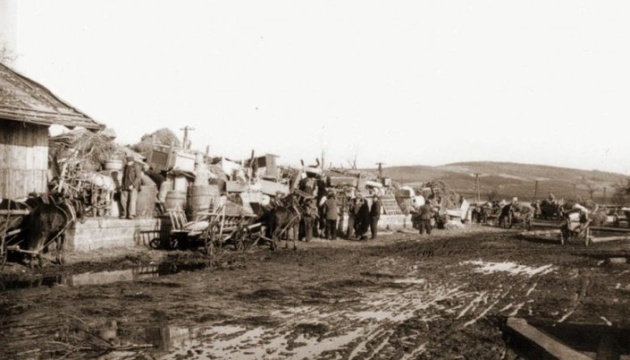
Today is Day of Remembrance of Forced Expulsion of Ukrainians in 1944-1951
This memorial date was established by a resolution of the Verkhovna Rada of Ukraine on December 18, 2018, and is celebrated every second Sunday in September.
As the Institute of National Remembrance reminds us, one of the outcomes of World War II was the establishment of new state borders in Europe, in particular between the USSR and Poland. In order to establish the Soviet-Polish border and eliminate long-standing disputes over disputed territories between Ukrainians and Poles, on September 9, 1944, in Lublin, the chairman of the Council of People's Commissars of the Ukrainian SSR, Nikita Khrushchev, and the Polish National Liberation Committee, Edward Osubka-Morawski, signed an agreement on “mutual exchange of population”: Ukrainians from Poland to the Ukrainian SSR and Poles from Ukraine to Poland.
All citizens of Ukrainian nationality from the territories of Chelm, Hrubieszów, Tomaszów, Krasnostaw, Włodawa, and other districts of Lublin, Rzeszów, and later Kraków provinces were to be relocated to the USSR. The resettlement was supposed to be voluntary, but it turned into forced deportations, which were accompanied by deprivation of property and restrictions on people's political, social, economic, and cultural rights.
The grounds for resettlement were lists of persons who expressed a desire to leave Poland, renounce its citizenship, and receive a passport of the Ukrainian SSR. The expression of will could be written or oral. This created ample opportunities for abuse. The agreement did not specify criteria for determining the nationality of a person. In the end, the main indicator for expulsion was the identification card of the Nazi occupation authorities (Kennkarte), which contained information about religion and nationality.
Under this agreement, in 1944-1946, more than 482,000 Ukrainians were forcibly relocated to the Ukrainian SSR. In Soviet Ukraine, they were resettled in 17 regions, from Halychyna to the Black Sea region, Slobozhanshchyna, and Donetsk region.
At the same time, almost 790,000 Poles and Jews were resettled from the western regions of Soviet Ukraine to Poland.
The deportation of Ukrainians continued with the “Vistula Action” carried out by the Polish communist regime. In 1947, those Ukrainians who refused to leave for the USSR were deported by the Polish authorities to the north and west of Poland. In a few months, almost 150,000 people were forcibly relocated.
Several tens of thousands more Ukrainians were resettled during the exchanges of border areas between the USSR and Poland in 1948 and 1951.
Photo: Ukrainian Institute of National Memory




